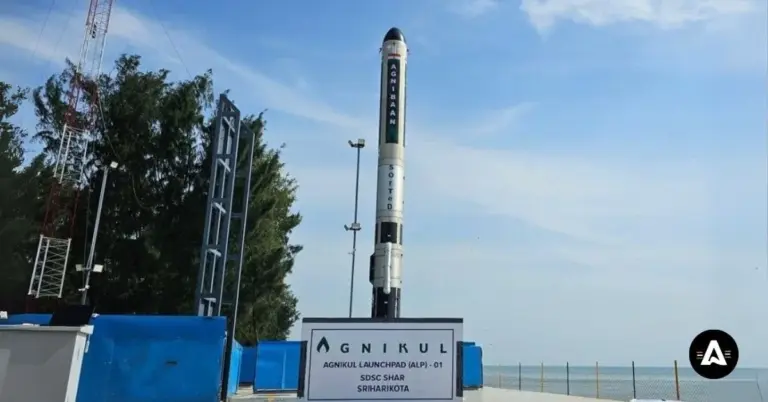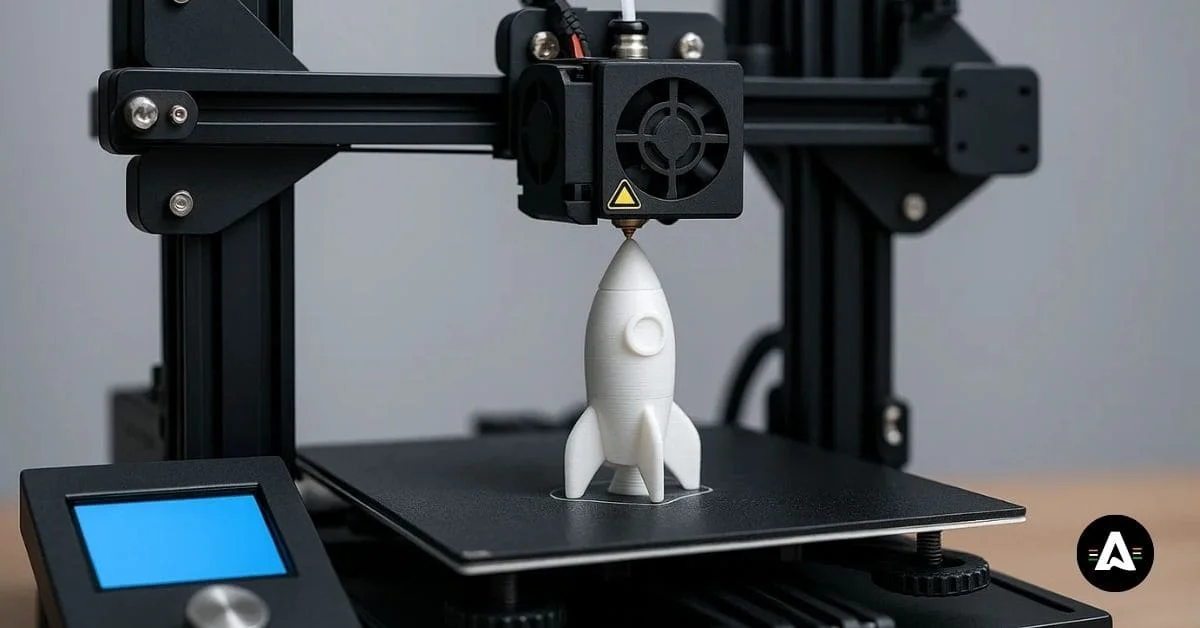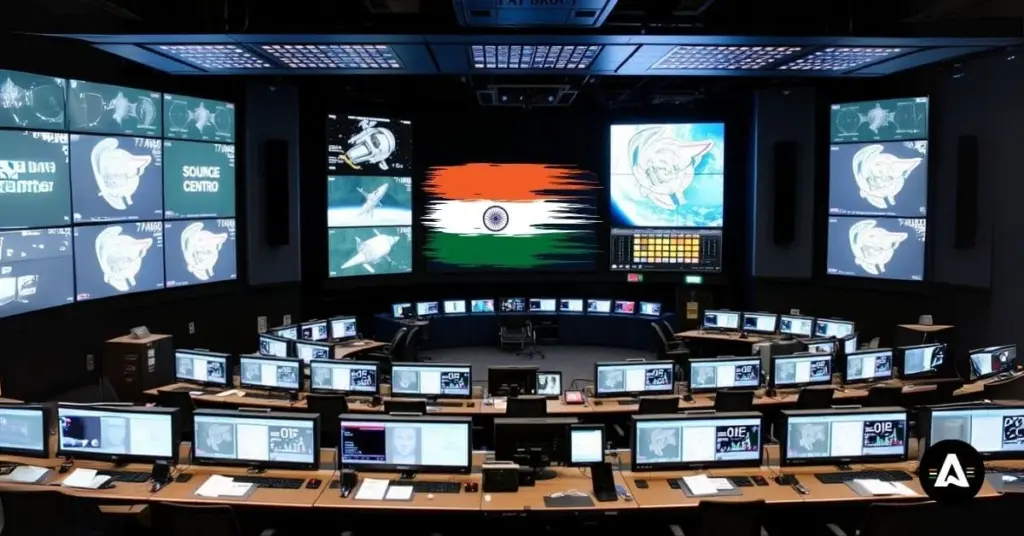Agnikul Cosmos: Building India’s 3D-Printed Rocket Engines

Agnikul Cosmos Private Limited began in 2017. This company is changing space technology in India. It is making the country’s first 3D-printed rocket engines.
The main rocket, called the Agnibaan rocket launch vehicle, can carry up to 300 kg of payloads to low Earth orbit. This means people can get on-demand and low-cost satellite launches when they need them.
Agnikul was started at the IIT Madras Research Park in Chennai. It has built the first private launchpad in the country at the Satish Dhawan Space Centre.
The company made history with the world’s first orbital launch that used a single-piece, 3D-printed engine named Agnilet.
Agnikul has met several big targets. It has raised $26.7 million in Series B funding. The team also proved its semi-cryogenic propulsion systems work well.
Introduction
Agnikul Cosmos is a new and bold Indian startup. It began at IIT Madras in Chennai. Agnikul is making rocket engines by using 3D printing. This is something new and exciting in the area of rocket building. The team at Agnikul wants to make a big change in how people go to space.
Agnikul offers low-cost and custom launch choices to satellite operators. These services are for people in India and for others around the world. The work Agnikul is doing in Madras is making people think about the future of rockets in a new way.
By using 3D printing to make rocket engines, Agnikul is helping India move ahead in the aerospace field. The way they work is setting a good example for other private companies around the world. It also shows what additive manufacturing can do in space exploration. Many people now watch Agnikul to see what they will bring next in this area.
Agnikul’s story shows how new ideas, better tech, and a clear vision can make things different in an area that usually does not have many big changes. In their journey, you can see how a new company can have a big effect. Agnikul is changing how people look at what the future of space trips will be.
The Rise of Agnikul Cosmos in India’s Space Industry
Agnikul started in 2017 in the busy city of Chennai at iit madras’s NCCRD. This company changed how people see the private aerospace field in india. They found new ways to launch satellites and worked on better ways to move things. The group in chennai worked together with the indian national space promotion. This group helped agnikul get what they needed, like money, support, and using isro’s labs. Everyone working together made agnikul stronger in aerospace, and help them plan for bigger steps in madras and all over the indian space field.
With help from IIT Madras, Agnikul is building a good research base in madras and other places in india. This company gives the country new ideas in aerospace. These new plans from Agnikul help india’s space startups keep up with the rest of the world and also meet what people want when it comes to commercial satellites. Right now, Agnikul is working to make better propulsion systems. This next step will shake up the market and help indian aerospace step into a whole new time.
Founders’ Vision and the Startup Journey
Srinath Ravichandran, who has strong technical expertise, joined with Moin SPM and some other co-founders to start Agnikul Cosmos Private Limited in 2017. Before this, Srinath worked in finance on Wall Street. He later moved to Chennai so he could follow his passion for rocketry. Srinath used the skills he got from both financial risk analysis and aerospace engineering to help build Agnikul Cosmos Private. This mix of knowledge was very useful for the company. It showed his deep interest in space and trying out new things in aerospace.
Agnikul Cosmos Private Limited is different because it wants more people to have a chance to go into space. The company noticed that small satellite owners do not have many ways to get their satellites into space. So, people like Srinath and Moin SPM decided to step in and help. They work from the IIT Madras Research Park and spend a lot of time doing research and creating new things in Madras. The team at Agnikul Cosmos Private Limited has made some big steps forward in their work.
Agnikul joined hands with IIT Madras to use new things like 3D-printed rocket engines. This shows they want to help new companies grow in the space sector. The team put in a lot of hard work. The founders had sharp ideas, which helped Agnikul move in front of the others.
Their main plan is to make space travel cost less and to have more people join in. They want people in India, and all over the world, to take part in space ventures. This is at the heart of what they do. The aim is to bring new ideas from madras and open new chances for everyone to go to space.
Key Milestones and Achievements
Agnikul Cosmos has reached some big goals. This helped the company get known in the india aerospace world. Here is a look at each step in its journey:
Milestone/Year | Description/Details |
|---|---|
2017 | The company was started with seed funding of ₹3 crores and began working at IIT Madras. |
February 2021 | It tested Agnilet, which is the first rocket and single-piece 3D-printed semi-cryogenic rocket engine in the world. |
November 2022 | A private launchpad opened at the Satish Dhawan Space Centre in Sriharikota. |
October 2023 | Raised $26.7M in Series B, making the total capital $40M, with notable investors like Anand Mahindra. |
May 30, 2024 | Launched the Agnibaan SOrTeD. This included many firsts, such as a suborbital flight powered by 3D-printed propulsion. |
Each of these achievements helps Agnikul move forward in the rocket engine and aerospace fields. The team in Madras keeps working hard, with support from IIT Madras and their private launchpad at Satish Dhawan Space Centre. Every new step they take helps Agnikul and their launchpad grow, and it also brings new ideas for India and the other people in this field.
Revolutionizing Space Tech with 3D-Printed Rocket Engines
At the center of Agnikul Cosmos is the new 3D-printed rocket engine called Agnilet. The rocket engine does not have any joints or welds. Because of how they make this rocket engine, they fix many old issues that one can see in rockets. This makes the rocket engine much more safe and it also helps to lower the cost. The team builds these rocket engines at IIT Madras. All of the work is done by their people in just a few hours.

This new smart rocket engine gives a lot of power. It brings big changes to how rockets be used today. People in the aerospace field see that India is set to change how space gear looks. The work at Madras could help make way for many new rocket launches. Using the latest combustion research in this propulsion system is a strong step for agnikul and for the country.
How 3D Printing Transforms Rocket Engine Manufacturing
3D printing has changed how people make engines. This new way helps them build engines faster and with more accuracy.
Agnikul Cosmos used this method to make the Agnilet engine in one single step. This smart move will have a big effect on how all engines are made in the future.
- By taking out extra steps in assembly, the number of joints goes down. This means there are fewer chances for something to go wrong or for people to make mistakes.
- The way they make the engines is now quicker and easier. It takes only about 72 to 75 hours to put the engines together.
- Using liquid oxygen as a propellant gives a lot of power for the propulsion systems. It is also better for the environment.
- By working with top companies like Larsen & Toubro, how they make materials improves. This helps the engines work better and keeps the quality high.
These new changes help startups like Agnikul grow fast. They also give them more power to fix hard problems in space technology. By using new and smart systems for mission control, these companies find better ways to send satellites into space and manage things in orbit. This is making new and higher standards in the world for how satellites are sent up and run in space.
Advantages Over Traditional Rocket Engine Methods
Switching from old ways to new ideas for making rocket engines can give us many benefits. You can see this with agnikul in the aerospace world. Agnikul has made some big steps forward in rocket technology. These things have helped change the way people see space, both now and in the future.
- Enhanced Payload Capacities: Agnikul Cosmos is working to make its rocket engines better so that each satellite can carry more weight. This way, every satellite can use its space in a good way, and missions work better.
- Mobile Launch System – Dhanush: With the new mobile launch system, called Dhanush, Agnikul gives more freedom and ease to rocket launches. This system makes it possible for rockets to take off from many locations. So, there is no need to build a large, fixed launch station at just one spot. Missions are easier to plan when you can pick from several places, such as the Agnikul Launchpad (ALP).
- Cost Efficiency: Agnikul Cosmos uses new ways to build rockets, making it much less costly. The lower prices help make space work open for more people and companies. As a result, more satellites are now able to go into space because it does not cost as much.
- Accelerated Production Times: Agnikul Cosmos uses smarter planning and new tech to make rockets faster. Thanks to this, rockets can be launched in less time. This means that satellites get sent into space sooner, helping people and their work carry on without long waits.
Many old ways to make parts for a rocket engine need a lot of work by hand. This often slows things down and costs more money. Agnikul is working to fix these problems. The company gives good help to small teams that want to launch rockets. Because of what Agnikul does, more people can try for spot launches. This brings in more competition and lets more groups join in this growing field. Agnikul stands out in the rocket engine world with new ideas for how to launch satellites.
Conclusion
To sum up, Agnikul Cosmos is leading the way in changing the space industry in India. The company uses 3D-printing to make rocket engines in a new way. This way helps Agnikul speed up building rocket engines and helps them work better and last longer. This big step will make space work easier and better for the long run. As Agnikul keeps reaching new goals, it will give more chances to work with others and help the world of aerospace grow. Keep watching for news about this exciting path. If you want to work with Agnikul or talk about working together, feel free to reach out!
Frequently Asked Questions
Agnikul Cosmos is known in India for its strong technical expertise and for making the world’s first 3D-printed rocket engines. There are other companies in aerospace like Skyroot Aerospace and Nibe Space, but Agnikul stands out. It has the first private launchpad in the country. The company also offers custom payload interval solutions. This helps them get ready for launches faster than most other teams in aerospace.
3D-printed rocket engines, like the Agnilet, make it easier for people to work on rockets because they do not need to put all the parts together by hand. This brings down the cost and helps things work better for everyone. It makes rockets more dependable, too. The new way to use liquid oxygen gives a cleaner burn. This helps mission control and allows for more exact handling when launching. So, this whole development is a significant milestone in the world of space tech.
The Agnibaan rocket launch vehicle is made to meet many needs. This launch vehicle can carry up to 300 kg to low Earth orbit. The first stage of the Agnibaan rocket can be set up in different ways. It also has a mobile launch system. This helps the launch vehicle do many types of missions well.
Yes! Agnikul had a successful test at the Satish Dhawan Space Centre on May 30, 2024. The Agnibaan SOrTeD took off from the Agnikul Launchpad. This was the first time that this launchpad was used for a lift-off in India. The successful test shows that Agnikul can use the launchpad for more orbital launches in the future.
Agnikul Cosmos Private Limited is glad to work with big names like India Today. The team also gets help from the IIT Madras Research Park and the National Center. All these groups work together to make India’s space plans stronger. Agnikul Cosmos Private, IIT Madras, and the others push India to do better in space work and new technology. Their team effort helps the country grow in space exploration.




